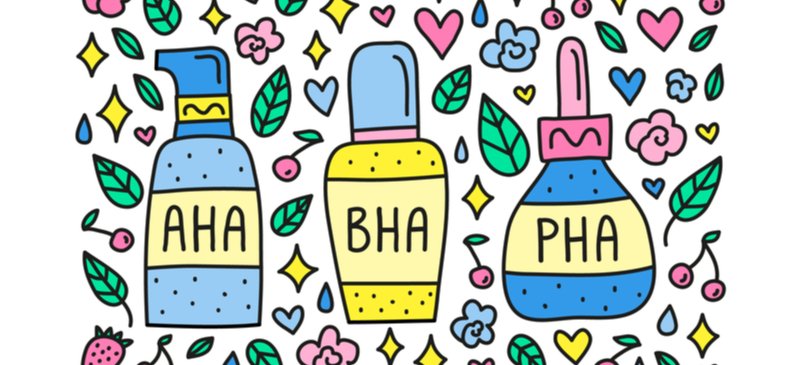
Even if you’re “in the know” about all things skin care-related, the world of facial acids can quickly get confusing considering how many options there are. While anti-aging, acne-fighting acids such as alpha hydroxy and beta hydroxy acids have earned a reputation for delivering great results, there’s another group of acids you should keep on your radar: polyhydroxy acids (PHAs).
What is PHA, and how does it differ from other beauty acids? Let’s look below at why PHA is one of the best options for sensitive skin, capable of improving skin’s appearance and texture with less risk for side effects.
What Are PHAs?
PHA stands for polyhydroxy acid.
What is polyhydroxy acid exactly? It’s a skin care ingredient that has similar exfoliating effects to better-known beauty acids, such as alpha hydroxy and beta hydroxy acids.
One difference is that it tends to be a bit more gentle than other acids.
The three most common PHAs are called gluconolactone acid, galactose acid and lactobionic acid. These are found in products such as eye creams, anti-aging gels and serums, toners, and skin creams and moisturizers.
How They Differ from AHAs, BHAs
Polyhydroxy acid is related to other exfoliating acids, including alpha hydroxy acids (such as glycolic acid and lactic acid) and beta hydroxy acids (such as salicylic acid), but each one has a slightly different molecular structure that affects how it is absorbed and utilized by the skin/body.
According to dermatologist Patricia Wexler, who spoke to Allure magazine, “The molecules of PHAs are much larger and therefore cannot penetrate as deeply as AHAs and BHAs.”
PHAs mostly work on the surface of the skin and do not reach deep layers of the epidermis, which means they tend to be less irritating than AHAs and BHAs.
They also typically lead to less photosensitivity (which can cause irritation when your skin is exposed to sunlight) and redness or other side effects compared to AHAs/BHAs, making them a better option for people with sensitive or sunburn-prone skin.
Here are tips for choosing between these different facial acids:
- If you have oily, acne-prone skin — BHAs are a good choice for controlling breakouts and reducing hyperpigmentation that occur afterward.
- If you have normal to dry skin — AHAs are good options for keeping skin moisturized and exfoliated.
- If you have somewhat fragile skin and want something less strong than AHA or BHA — PHAs are a good choice, or you can try a product that combines these different acids together. (Just be careful not to go overboard with how much you use.) A combination facial serum can be a great way to tackle fine lines, dullness and enlarged pores.
Benefits
What is PHA in skin care good for?
Here are some of the key benefits of adding PHA to your beauty routine:
1. Has Gentle Exfoliating Effects
PHA is a gentle exfoliant that sloughs off dull skin and helps remove dead skin cells from the surface of the skin, which improves skin’s texture and overall appearance.
Exfoliating your skin can also help other beneficial ingredients, such as serums and moisturizers, penetrate your skin more deeply, which means you’re more likely to see results.
READ RELATED: Top 10 Unexpected Uses for Coffee Grounds
Dermatologists even recommend PHA products to people with skin issues like eczema or atopic rosacea, since it can decrease redness without aggravating the skin.
2. Can Help Improve Skin Elasticity
PHAs can help support healthy collagen formation in your skin by decreasing glycation. Glycation is the process that wears down collagen and elastin, which are needed to keep your skin strong and youthful-looking.
3. Fights Free Radical Damage
Beauty acids including PHA have been shown in studies to provide your skin with antioxidant properties that help counteract the effects of free radicals, which damage and age your skin. PHAs can also help repair skin damage by stimulating cellular turnover.
4. Can Help Keep Skin Moisturized
If you have dry skin, PHAs are an attractive option since they naturally act like humectants, keeping water locked in your skin so it remains moisturized without becoming too oily.
How to Use
How often should you use PHA? Because it’s gentler than other acids, most people can safely use it once or twice daily (ideally after testing how their skin reacts).
You’ll find PHA in a variety of night creams, facial serums and other anti-aging products, oftentimes in combination with other skin care ingredients, such as hyaluronic acid (which is used to replenish moisture and decrease fine lines) and hydrating oils like coconut oil, argan oil and marula oil.
What should you not mix with PHA? Be careful about applying too many exfoliating oils to your skin at once, such as combing PHA, retinoids, AHA and BHA all together. This can lead to redness and signs of irritation, especially if you have sensitive skin.
Some products do feature multiple types of acids. However, these are most often best for people without much sensitivity, or they should be used in small amounts.
Here are tips for using PHA safely to get the most results:
- Apply beauty oils to clean, dry skin. Wash your skin with a gentler cleaner. Then use a clean towel to remove water, and let it fully dry.
- Gently spread a thin layer of oil over your face with your fingertips to massage the oil in, being careful not to rub it in too vigorously or to get the oil in your eyes.
- Start by using PHA products once daily, and consider increasing to twice daily applications if you don’t show any signs of irritation.
- It’s recommended that you also apply sunscreen daily to get the best results.
Risks and Side Effects
While polyhydroxy acid is usually safe for most skin types, there’s always a chance of experiencing side effects when starting to use a new product. All facial acids can cause side effects when you expose your skin to the sun, so be cautious about skipping sunscreen.
To reduce the chances of experiencing irritation, start using PHA products several times per week, and slowly increasing to nightly use or more as tolerated. Use a small, pea-sized amount of the product to avoid adding too much, and wait until your skin is completely dry before applying it, which can help your skin to best absorb it.
Can PHA cause purging?
Purging is another way to describe an acne breakout when you add a new skin care ingredient to your routine. According to the Skincare Edit website, “Products that can trigger purging include: Hydroxy acids (AHAs, BHAs and PHAs) and fruit acids, retinoids, vitamin C treatments, exfoliating scrubs and others.”
Purging happens because when dead skin cells are removed, it loosens trapped sebum and debris, which can rise to the skin surface and cause blemishes. This is actually a beneficial process and should clear up on its own within about six weeks, so it’s recommended that you continue using the product in order to eventually gain clearer skin.
Conclusion
- PHA stands for polyhydroxy acid, which is a type of skin care ingredient found in facial oils, serums and moisturizers.
- What is PHA used for? It mostly works as an exfoliant since it removes dead skin cells from the surface of the skin. It can also help improve tone, texture, appearance of spots and fine lines, and reduce dryness.
- PHAs are good alternatives to both AHAs and BHAs if you tend to have very sensitive skin. You can use products containing polyhydroxy acid on clean, dry skin once or twice daily depending on how you respond to it.
Source: Dr. Axe






